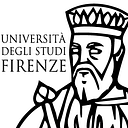Foundations of Human and Animal Sensory Awareness: Descartes and Willis
From Firenze University Press Book: Reading Descartes
Deborah Brown, University of Queensland
Brian Key, University of Queensland

1664 marked the year of publication both of René Descartes’ Traité de l’homme and Thomas Willis’ Cerebri anatome, although Descartes’ treatise was written much earlier (between 1629 and 1633) and had appeared in Latin in 1662. Placed side-by-side the works are striking both for their similarities and their differences. A strict mechanist, Descartes sets out to uncover the principles governing the functions of the human body as if it were a “statue or machine made of earth” — that is, to describe all “our functions which can be imagined to proceed from matter and to depend solely on the disposition of our organs” (AT 11, 120; CSM 1, 99). The contrast is with all those functions we possess as human beings that depend on the faculties of the rational soul. The rational soul is really distinct from this automaton that is the human body, and there is no other soul — vegetative or sensitive— needed to explain the vital and sensitive functions of an animal body. These functions include non-conscious sensory processing and appetite; the circulation of the blood and respiration; digestion, nutrition, growth; sensory processing and reflexive behaviours; indeed, any of the functions we share with animals. Here, as elsewhere in Descartes’ anatomical treatises, the explanatory strategy relies on a kind of “reverse engineering,” appealing to the same principles that one would apply in dissecting and analysing the movements of a clock or other automaton. He first identifies a function; then proceeds to identify the structure responsible for performing that function; and then attempts ultimately to subsume the explanation under the laws of mechanics. Willis’ explanatory strategy also involves a commitment to iatromechanics, but one tempered by his iatrochemistry (Arráez-Aybar et al. 2015). His explanations stop at the level of describing anatomical structures and chemical reactions that either promote or inhibit the activity of the animal spirits. Willis analyses the “nervous juices” or animal spirits that flow through the nerves and account for sensory processing, storage, and retrieval, as well as all muscular movement in the animal body, as mixtures of chemical particles. These include familiar active (Paracelsian) and passive principles (active: mercury or spirit, sulphur or oil, and salt; passive: water, phlegm, and earth) but also nitro-aerial particles (Eadie 2003, 16). Whether he thought that these chemical properties were basic or reducible to the properties like those of Cartesian physics (e.g., size, shape, motion) is obscure, but also probably irrelevant. The “nitrosulphureous particles” (Willis 1681a, 129) in the animal spirits are essential to explaining how the animal spirits go off with a bang in the brain when they need to produce a fast muscular reaction at a distance. The matter of the brain and nerves, Willis hypothesized, is too “tender” to account for the speed of reflexes — a simple opening of a valve to release animal spirits into the nerves wouldn’t cut it. Where Descartes’ central metaphor for the nervous system was the slowly unwinding clock,2 Willis’ was gunpowder — an explosive substance able either to propel a projectile a considerable distance at great speed or to displace the quantity of animal spirits or nervous fluid already in the nerves (Willis 1681b, 40; Willis 1681a, 129). This, according to Willis, is how the animal spirits control muscular movements. In this paper, we examine how Willis responded — perhaps unwittingly — to a specific challenge laid down by Descartes’ bête-machine hypothesis, namely, the problem of locating a non-arbitrary basis for distinguishing between those non-human animals capable of thought and consciousness and those that are not. Descartes argues that to demonstrate consciousness or thought, an animal would have to exhibit flexible, non-deterministic behaviour and be able to communicate their thoughts via language (broadly construed to include gestures or nonverbal signs). His conclusion is that no animal is capable of thought or consciousness (see Brown 2015 for discussion). We focus on Willis’ examination of the distinction between the involuntary and voluntary nervous systems as addressing the question of whether animals can perform more than reflex functions. Willis’ recognition that higher, cortical brain structures are involved in voluntary motor control was, we argue, prescient. Philosophically, it allowed him to make a distinction between the types of sensitive soul different brutes can be said to possess — finer grade distinctions than Descartes was prepared to allow but proved useful in accounting for different kinds of animal behaviours. Willis is thus clearly opposed to Descartes, but he is also opposed to Descartes’ chief opponents, the vitalists, who conflated any kind of sensory processing with conscious cognitive processing. While Willis allows that some non-human animals are conscious and capable of a specific kind of thought, he accuses Descartes of committing a non sequitur in supposing that the animal soul would, if it were thinking, need to be both immaterial and immortal. Significant challenges to Cartesian metaphysics were thus advanced on the back of Willis’ empirical investigations into the “seat” of consciousness in the brain. We close this discussion by pointing to the legacy of Willis’ scientific contributions for the science of consciousness today, including his recognition of the importance of the cortex to subjective experience, and his application of what was to become the foundational axiom of neurobiology, namely, that structure-determines-function.
DOI: 10.36253/979–12–215–0169–8.06
Read Full Text: https://books.fupress.it/chapter/foundations-of-human-and-animal-sensory-awareness-descartes-and-willis/14022
